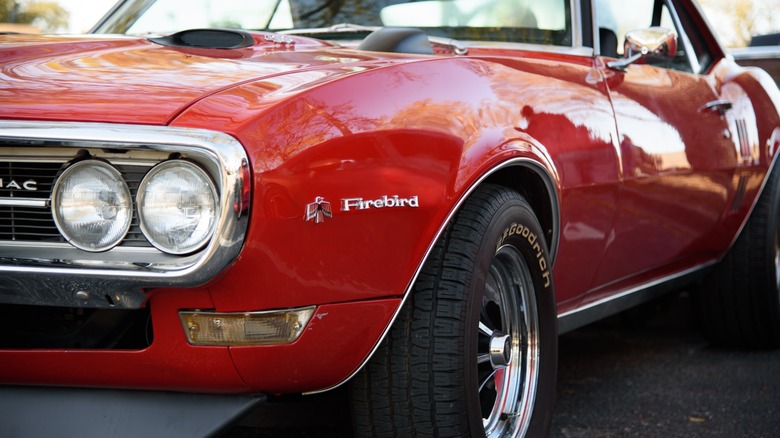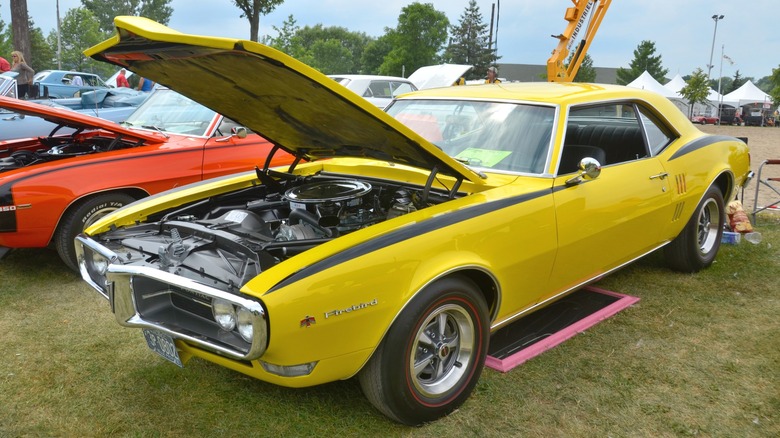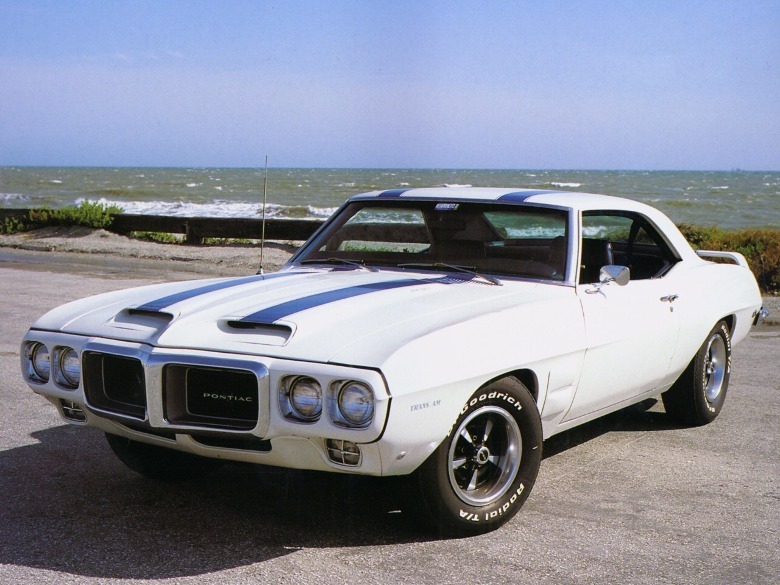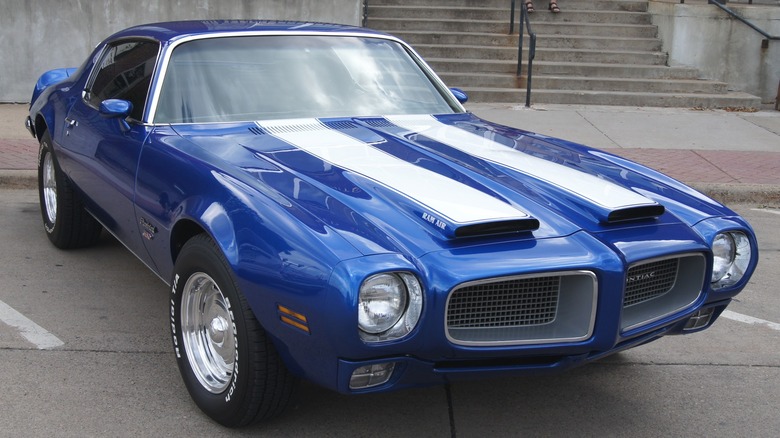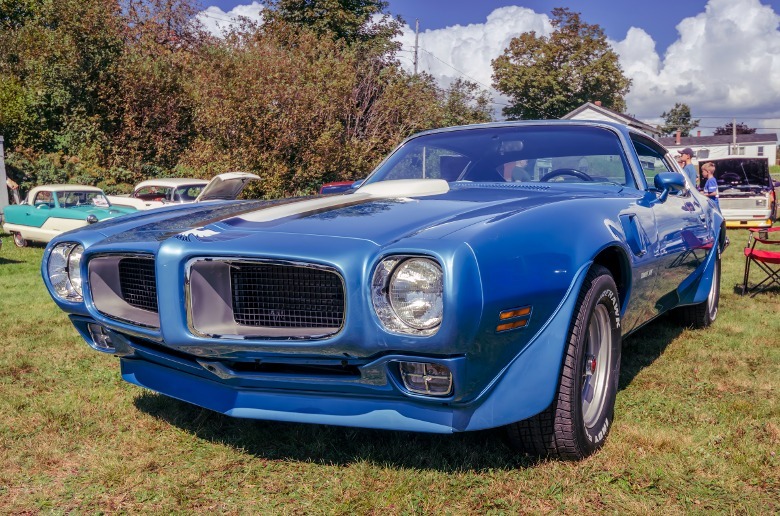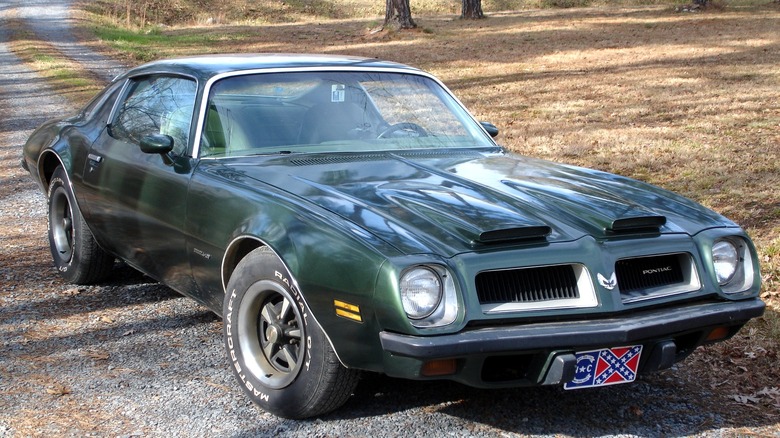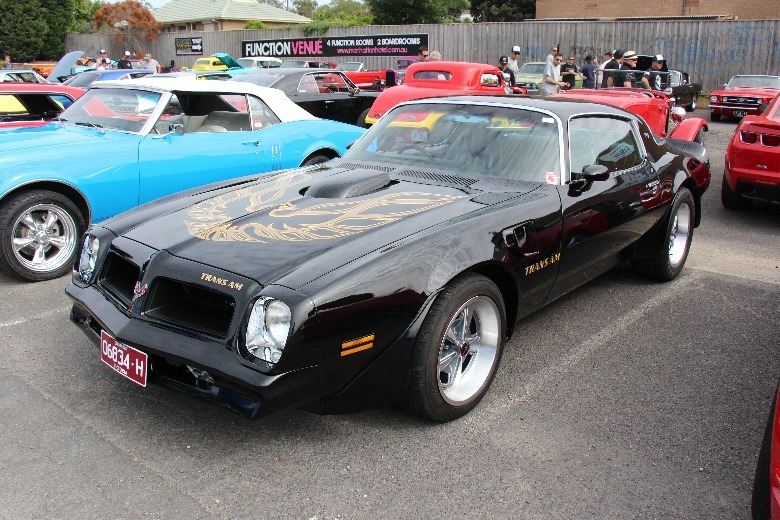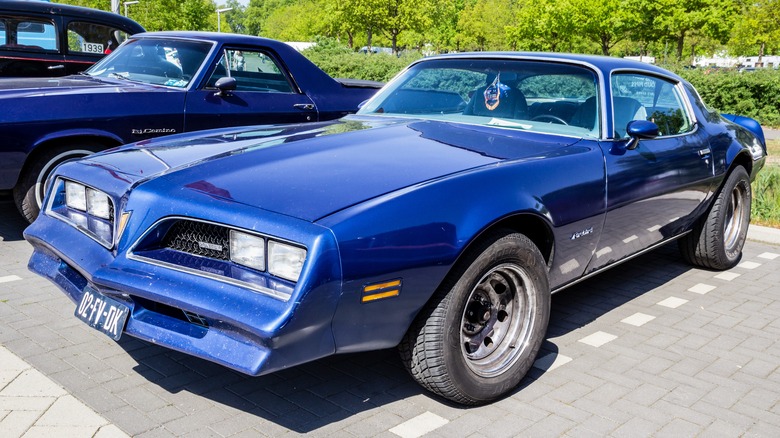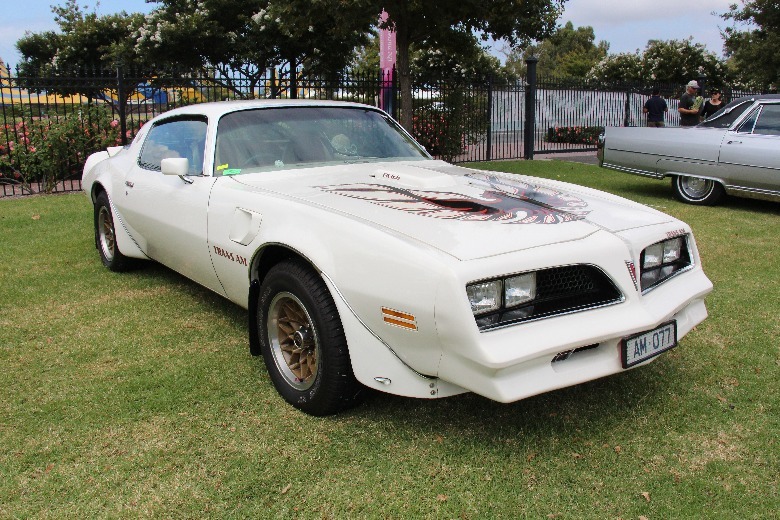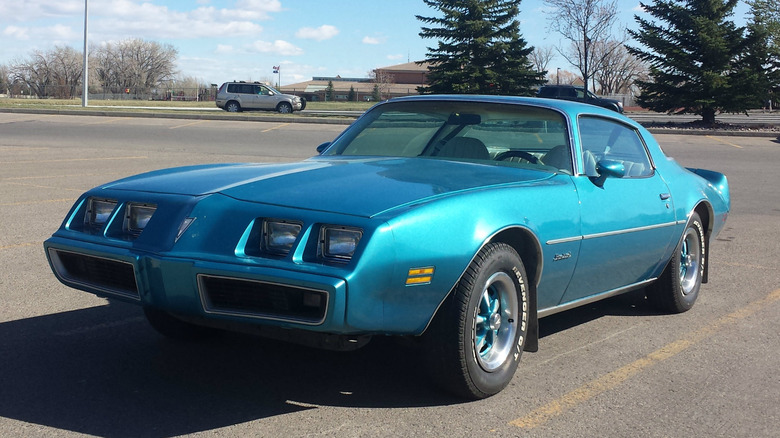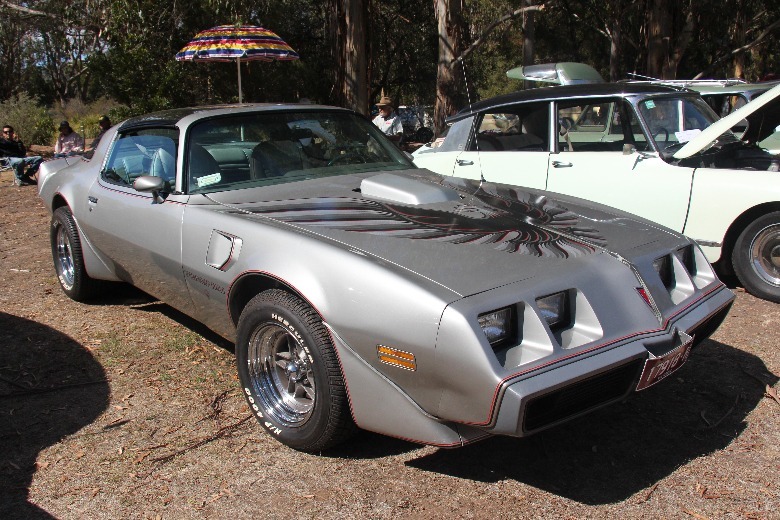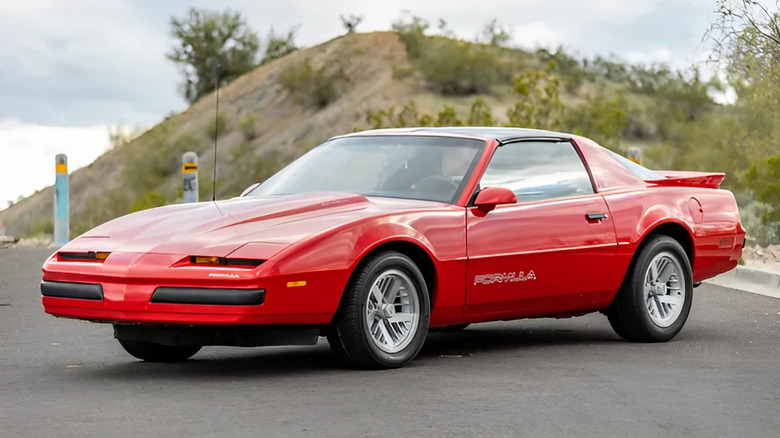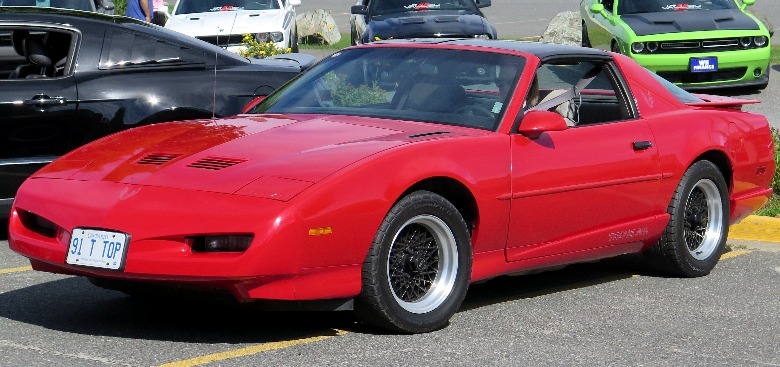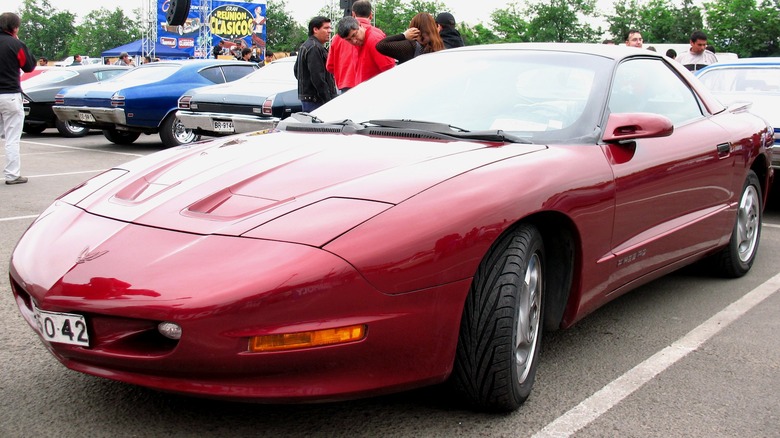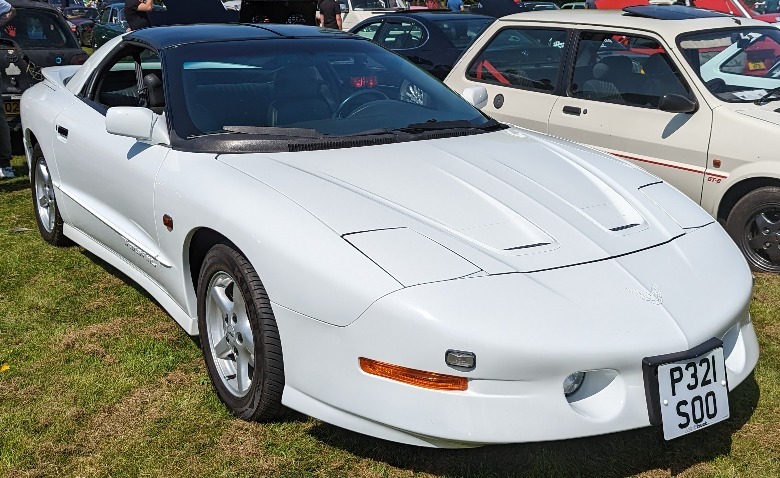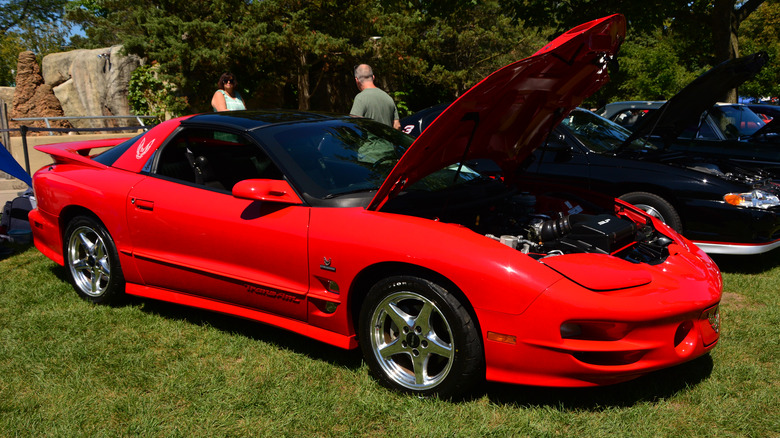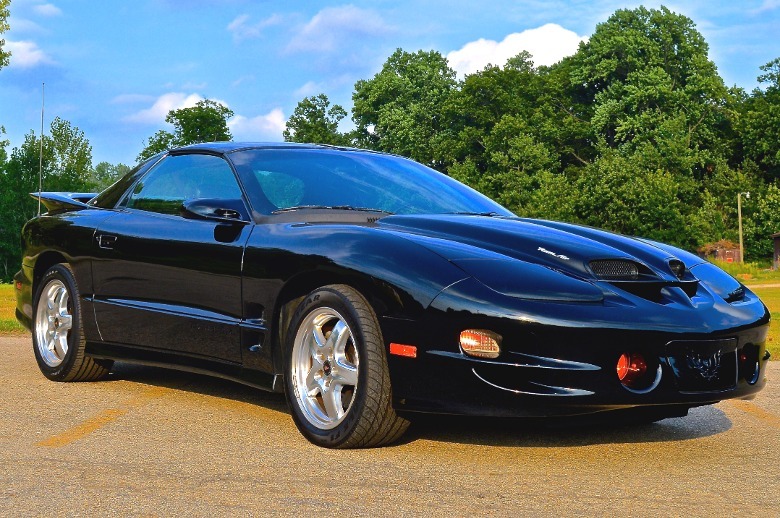Pontiac Firebird: A Visual History
The Pontiac Firebird was one of GM's attempts to catch up to the burgeoning pony car segment pioneered by the Plymouth Barracuda and popularized by the one and only Ford Mustang. Built on GM's F-body platform, the Firebird started as Pontiac's version of the Chevrolet Camaro. However, GM gave Pontiac leeway to stamp its mark on the base concept — with parts such as the hood, front fascia, engines, and wheels all exclusive to Pontiac.
Pontiac debuted five Firebird models in 1967, and the car stayed in production until 2002, with four generations of Pontiac Firebird spanning those 35 years. The second generation was the longest-lived, sticking around for an impressive 11 years and going through four facelifts — as well as a dizzying array of GM engines as the corporation stumbled through tightening emissions regulations during the so-called malaise era.
From the Coke bottle styling of its first generation through to the streamlined final iteration of the 1990s and early 2000s, Pontiac kept tweaking the Firebird throughout its life, changing its style to suit the times and creating some excellent muscle cars in the process.
Without further ado, let's take a slow jaunt down memory lane and enjoy the Firebird's journey through the years.
First generation (1967 - 1969)
The legendary first-generation Pontiac Firebird debuted in 1967 with the curvy Coke bottle styling common to many muscle and pony cars of its era, including its sibling, the Chevrolet Camaro, and the classic Chevrolet C3 Corvette. Essentially, Coke bottle styling meant a narrow body and large, prominent fenders, a curved look that echoed Coca-Cola's then-common glass bottles.
The first-generation Firebird looked quite similar to the Camaro, although it had a notably different front end. Where the Camaro had a conventional chrome bumper on the bottom, the Firebird sported an integrated chrome bumper surrounding the front grill and headlamps. Pontiac introduced five models in 1967 — the Firebird, Firebird Sprint, Firebird 326, Firebird H.O., and Firebird 400. Engines ranged from a 230-CI six-cylinder in the base Firebird and Firebird Sprint up to a 325-horsepower, 400-CI V8 in the Firebird 400. All models were available in hardtop and convertible versions.
In 1969, Pontiac introduced the Firebird Trans Am. For an extra $750 — roughly $6,500 in 2024 — or so, owners would receive a unique paint scheme, revised front, decklid spoiler, and some decals (the Trans Am's signature aggressive body kit wouldn't come until later). Under the hood would be either the Ram Air III or Ram Air IV versions of Pontiac's 400-CI V8, making 335 and 345 horsepower, respectively. Pontiac built 697 Trans Ams, making it one of the rarest Pontiac muscle cars out there.
[Image by Matt Morgan via Wikimedia Commons| Cropped and scaled | CC BY-SA 2.0]
Second generation (1970 - 1973)
GM introduced a new generation of F-body cars in 1970, with a new Chevrolet Camaro and Pontiac Firebird debuting with revised styling, including body-colored trim for the Firebird's nose in place of the first generation's chrome. The Camaro and Firebird also dropped the Coke bottle styling of the late '60s models, along with the rear quarter window.
Pontiac simplified the second-gen Firebird's model offerings, with only four models available: the basic Firebird, Firebird Esprit, Firebird Formula 400, and Firebird Trans Am. The Firebird Esprit was a more luxurious version of the basic model that came standard with a 350-CI, 255-horsepower V8, with an optional 400-CI, 265-horsepower V8 — the basic Firebird had a six-cylinder engine as standard, with the 350-CI V8 available as an option.
The Formula 400 kicked things up a notch visually and mechanically, with two aggressive hood scoops present if purchased with the Ram Air package, which pushed the 400-CI V8's peak 345 horsepower output out to 5,000 RPM. Finally, the 345-horsepower Trans Am — the best Trans Am ever, in our estimation — came with an aggressive body kit that would become the norm for all future Trans Ams. This body kit included a rear-facing hood air intake, molded rear spoiler, and a front air dam, although the now-classic "screaming chicken" hood decal took another few years, debuting as an option on the 1973 Trans Am.
[Featured image by Greg Gjerdingen via Wikimedia Commons | Cropped and scaled | CC BY 2.0]
Facelifted second-generation (1974 - 1976)
The Firebird entered 1974 with an all-new front end, with a sloping, shovel-like front end and a more conventional chrome bottom bumper. The rear lights also differed, with three horizontal light strips in place of the monolithic design of previous generations. Pontiac expanded engine options even further, starting in 1974. The Formula, available with four engines the previous year, was now available with five, while the Trans Am was now available with one of three. The new engines were somewhat economy-minded: the Formula got a 400-CI V8 with a two-barrel carb, while more fuel-conscious Trans Am owners could opt for a 400-CI V8 with a four-barrel carb.
The decision seemed to have been a good one, as production numbers for 1974 show that the 400-CI was the most popular Trans Am, with 4,664 units produced. The standard 455 was also popular, with 4,648, while only 943 customers opted for the high-performance Super Duty 455. The latter isn't too surprising, considering the roughly $700 premium — just over $4,500 in 2024 — for the Super Duty 455 and the 1973 oil crisis that pushed oil prices through the roof — and gave birth to some truly bad cars. The now-iconic T-top also debuted during this stretch, with limited-edition black and gold 1976 Firebirds available with the roof style as an option.
[Featured image by Angilas89 via Wikimedia Commons | Cropped and scaled | CC BY-SA 3.0]
[Image by Cars Down Under via Flickr | Cropped and scaled]
Second-generation, facelifted again (1977 - 1978)
Pontiac tweaked the Firebird a lot during the second-generation's 11-year run and introduced another new front fascia for the 1977 model year. The shovel shape stayed, but the 1977 Firebird had a more aggressive front end, with a more pointed shape and four square headlamps instead of the single unit per side of the earlier second-gen Firebird.
Pontiac also introduced a few new engines in 1977 despite already having updated the engine selection the previous year. Among these were the 305-CI Chevrolet V8 and a 350-CI Oldsmobile V8. The former became the standard engine for the Formula around the middle of the year, while Pontiac reserved the latter for California and high-altitude states. The Trans Am also got a new engine this year, with a new T/A 6.6 (liter) V8 — Pontiac switched to metric measurements that year — that produced the same 200 net horsepower as the 455-CI V8 but across a wider RPM range.
Pontiac continued to offer the black-and-gold Trans Am with a T-top, but currently as the Trans Am Special Edition. Pontiac offered these to coincide with the black-and-gold Trans Am's appearance in 1977's "Smokey and the Bandit," driven by Burt Reynolds. Pontiac made some minor changes in 1978, introducing a crosshatch grill and bumping the horsepower output of the T/A 6.6 to 220 horsepower, although other engines remained the same.
[Image by Cars Down Under via Flickr | Cropped and scaled | CC BY 2.0]
Final second-generation restyle (1979 - 1981)
The days of the second-generation GM F-body pony car were coming to a close by the end of the 1970s, but that didn't stop Pontiac from redesigning the car in 1979. Unsurprisingly, this final redesign featured a new front, with a pointier and more aerodynamic design surrounding the headlamps and front intakes positioned low on the front bumper. The rear light setup was new, boasting a strip of dark louvered glass across the rear end that concealed the lights when not in use.
Engine options broadly remained the same for 1979, but things changed drastically in 1980: When the new decade rolled around, prospective Firebird owners would find that the pony car was now only available with an automatic transmission and much smaller displacement engines. Gone was the 6.6-liter, with the top-end engine options being 4.9 or 5.0-liter V8s.
1980 also saw a couple of firsts for the Firebird. One was the debut of electronic spark control, available on the Trans Am's base 4.9-liter V8. Pontiac also offered a turbo for the first time in the Firebird's engine bay this year, with a 210-horsepower turbocharged 4.9-liter V8 available for the Formula and Trans Am. 1981 was a quiet year in comparison, although Pontiac reintroduced a four-speed manual transmission for Firebirds equipped with the 5.0-liter V8.
[Featured image by dave_7 via Flickr | Cropped and scaled | CC BY 2.0]
[Image by Cars Down Under via Flickr | Cropped and scaled | CC BY 2.0]
Third generation (1982 - 1992)
Pontiac introduced the third generation of the Firebird at the start of the 1980s, bringing with it a new, sleek look developed through extensive wind tunnel testing. The third-generation base model Firebird had an impressive 0.35 drag coefficient on the base model, which dropped to 0.34 for the Trans Am, essential given the anemic engine options.
The Firebird launched in 1982 with four, six, and eight-cylinder engines. The lowest-end engine was a 90-horsepower 2.5-liter four-cylinder, while the Trans Am was available with one of two Chevrolet-sourced 5.0-liter V8s: a standard 145 horsepower model or a 165 horsepower cross-fire injection version — poor enough to make the 1982 Trans Am one of the worst Pontiacs ever. Pontiac also sold a limited-to-200 Bandit Trans Am in 1982, with the classic paint scheme and an optional performance package.
Pontiac didn't make many changes for the first few years, with only minor changes to the front end in 1985. The final years of the third-gen Firebird saw a few notable changes and additions, though: first up was a new 210-horsepower 5.7-liter V8, introduced to the Trans AM GTA in 1987. By the time Pontiac introduced a new, longer nose to the Firebird in 1991, this 5.7-liter V8 was making 235 horsepower and 340 lb-ft of torque, while the high-power version of the 5.0-liter V8 had settled at 200 horsepower and 295 lb-ft of torque.
[Image by Elise240SX via Wikimedia Commons | Cropped and scaled | CC BY-SA 4.0]
Fourth generation (1993 - 1997)
The early 1990s saw Pontiac continuing with the design language hinted at with the third-generation Firebird's 1991 nose. The fourth-generation Firebird boasted an even more streamlined design — complete with a 68-degree windscreen rake that allegedly improved aerodynamics — that bore more than a slight similarity to its F-body cousin, the fourth-generation 'catfish' Camaro.
However, Pontiac didn't just update the styling: engine options were simplified — and much improved — for the fourth generation, too. The base Firebird came with a 3.4-liter V6 good for 160 horsepower, while the Formula and Trans Am had the 275-horsepower, 5.7-liter LT1 V8 under the hood, paired with a six-speed manual as standard. All three Firebirds were available with a four-speed automatic if desired. Unlike previous generations, the fourth-generation Trans Am didn't look too dissimilar from the lower-tier models, with only its larger 245/50ZR16 tires and rear spoiler setting it apart.
By 1997, power levels for the V6 and V8 engines had climbed to 200 and 285 horsepower, respectively. Late-90s Firebird owners could also opt for a WS6 Performance Package for the Formula and Trans Am coupes. The package included the titular Ram Air Induction System, suspension and exhaust upgrades, and new 17-inch wheels. There was also a 1LE autocross package for the Firebird Formula, which combined the powertrain upgrades of the WS6 package with an upgraded suspension for track use.
[Featured image by RL GNZLZ via Flickr | Cropped and scaled | CC BY-SA 2.0]
[Image by Calreyn88 via Wikimedia Commons | Cropped and scaled | CC BY-SA 4.0]
Facelifted fourth generation (1998 - 2002)
GM refreshed its F-body cars for the 1998 model year, introducing new engine options and exterior styling for the Chevrolet Camaro and Pontiac Firebird. The 1998 Firebird had a bunch of new design cues, most notably a new hood with front-facing intakes — similar to the previous year's Trans Am — and a new front end. The rear lights also changed, with a honeycomb pattern in place of the last year's grid.
1998 was also the year the legendary General Motors LS1 V8 made its way to the Firebird's engine bay. The 305-horsepower LS1 replaced the LT1 entirely in the Formula and Trans Am, while the base Firebird still came with the same 200-horsepower V6 it had sported for the past few years. If 305 horsepower wasn't enough, the well-heeled — or performance-minded — could also opt for a Ram Air Performance and Handling Package.
This package bumped power up to 320 horsepower, swapped the standard wheels and tires for meaty P275/40ZR17s on cast-aluminum wheels, and upgraded the front and rear suspension. The package also came with a new front hood sporting exaggerated front intakes, making it look surprisingly menacing. Unfortunately, this would be the last Firebird the world would ever see, and GM dropped both the Camaro and Firebird in 2002. While the Camaro would live again, GM's decision to shut down Pontiac in 2009 meant that the Firebird would not get a chance to rise from the ashes.
[Image by WMrapids via Wikimedia Commons | Cropped and scaled | CC BY-SA 4.0]
